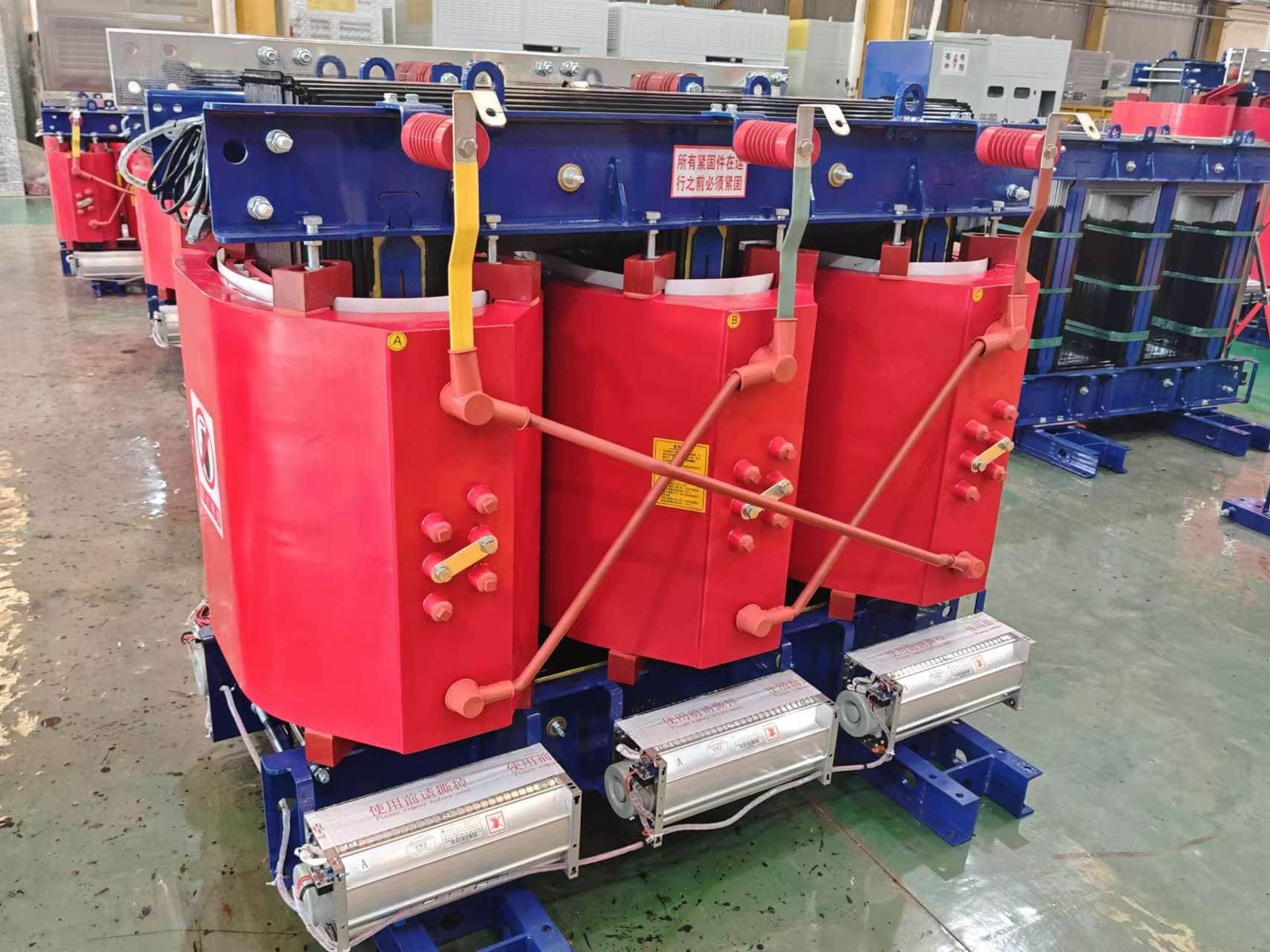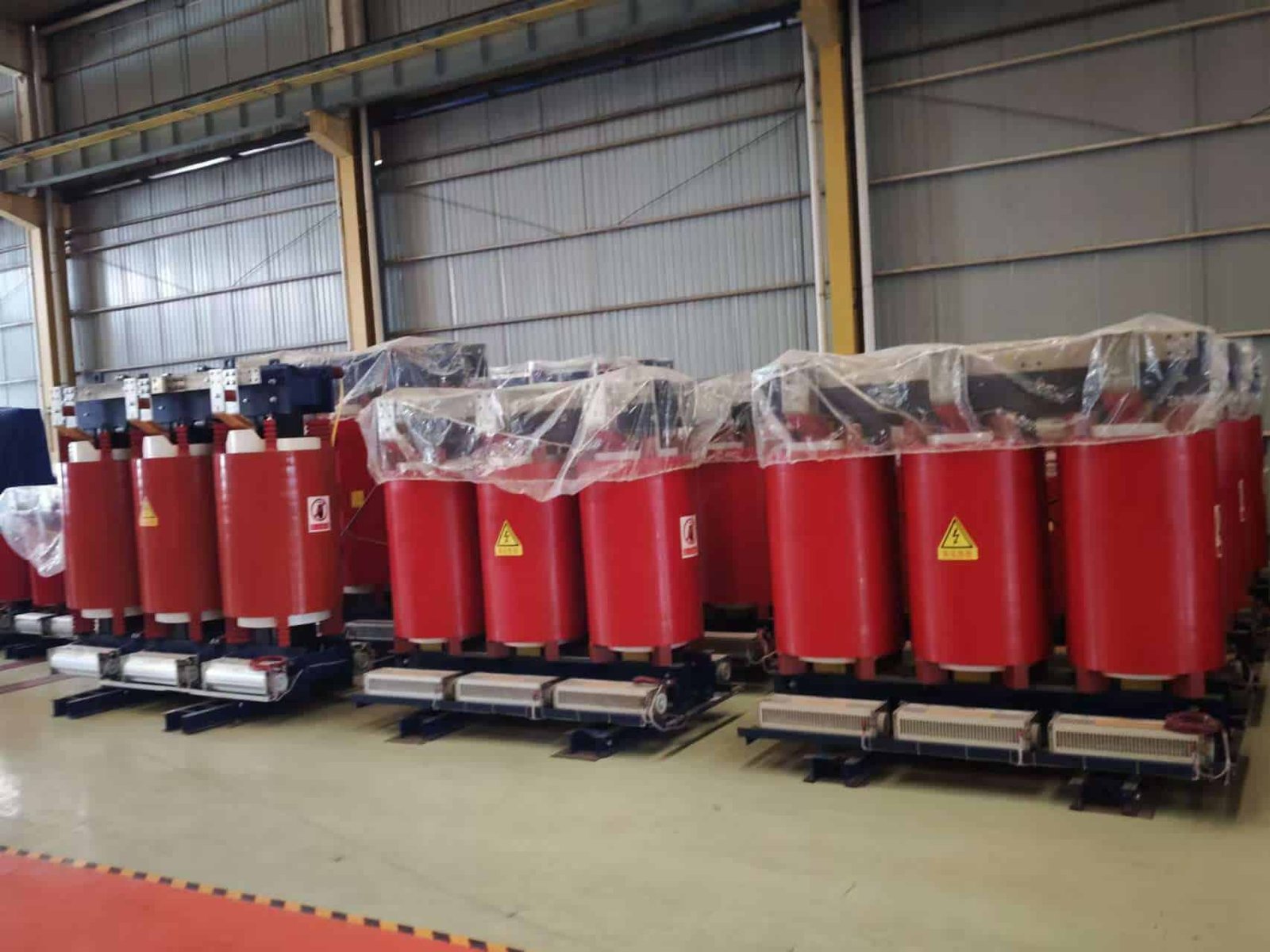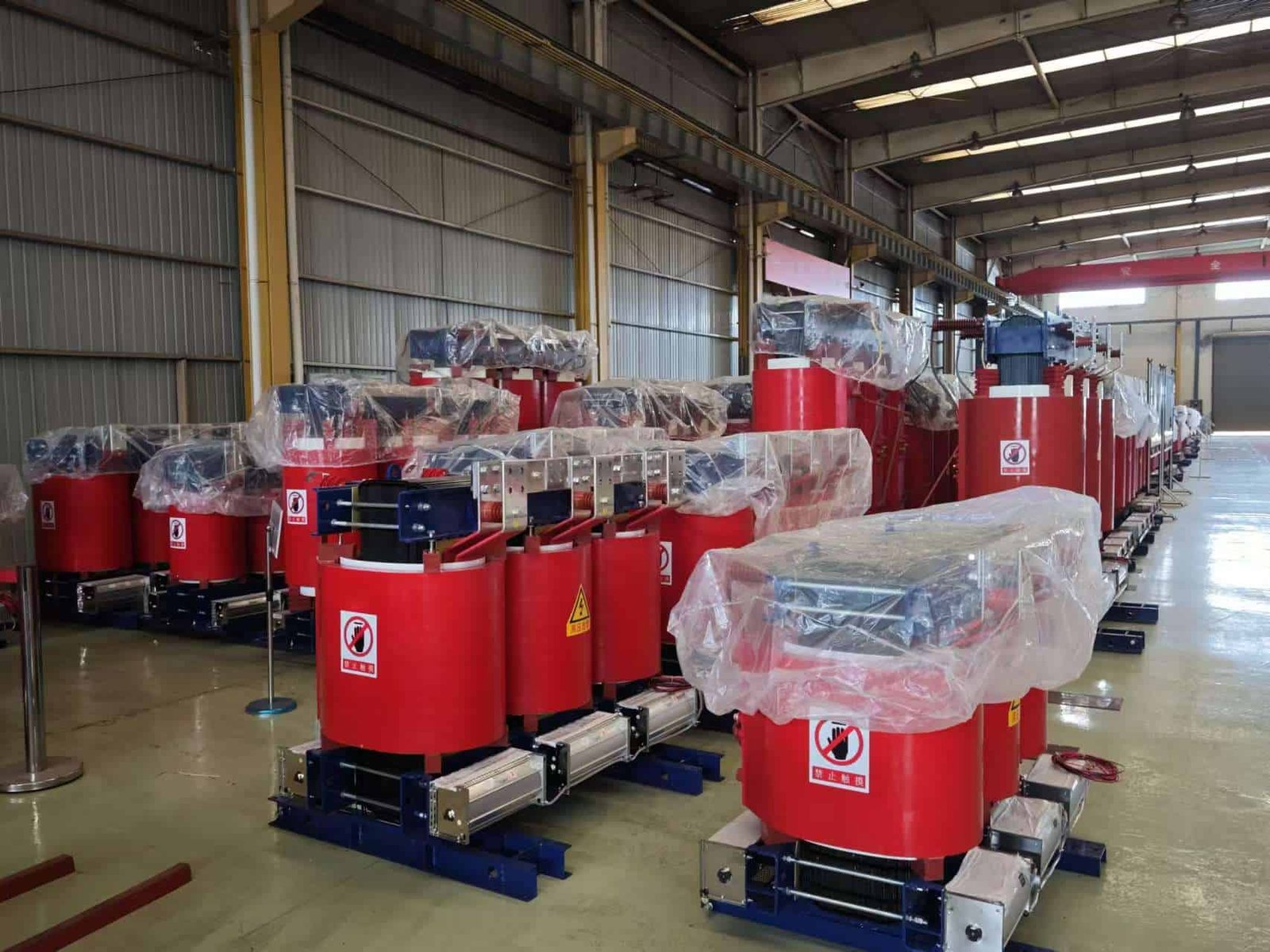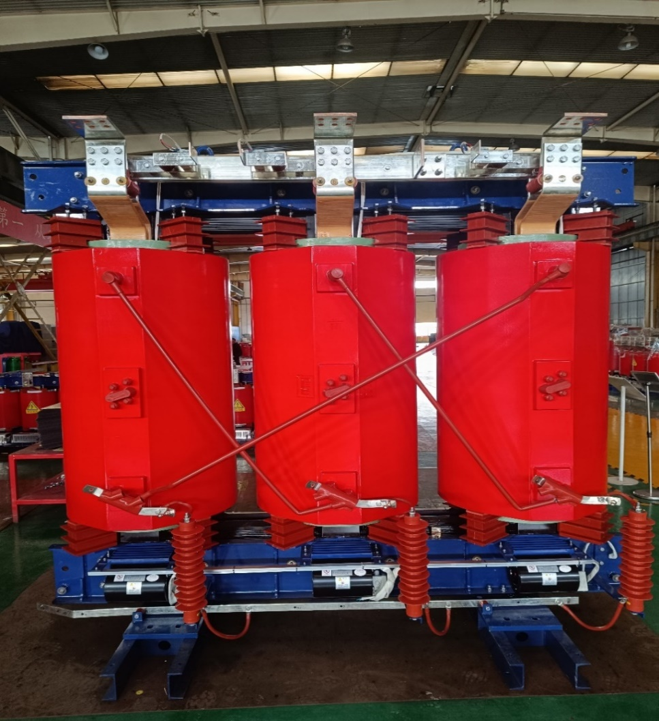Dry type transformers are widely used in commercial buildings, industrial facilities, data centers, and renewable energy systems due to their safety, fire resistance, and environmental friendliness. One of the most important specifications when selecting a dry type transformer is its voltage range, as this determines where and how the transformer can be applied. Understanding typical primary and secondary voltage levels helps engineers and buyers make informed decisions for system compatibility, safety, and performance.
What Voltage Levels Are Common for Low-Voltage Dry Type Transformers?

Low-voltage dry-type transformers typically operate within standardized voltage ranges defined by regional electrical systems and equipment compatibility. These transformers are used to step down medium-voltage supplies to usable low-voltage levels for commercial, industrial, and residential loads. Because they operate without oil and rely on air or resin encapsulation for insulation, dry-type units are most commonly applied in indoor installations, public buildings, industrial plants, data centers, and renewable energy systems.
Common Primary Voltage Levels (Low-Voltage Side of MV/LV Step-Down Units)
When referring to “low-voltage dry-type transformers,” the LV winding typically falls within the following ranges:
1. Global Standard Low-Voltage Levels
These voltages are recognized worldwide and appear in most dry-type transformer designs:
- 400 V (Europe, Middle East, Asia)
- 380 V (legacy systems in Asia)
- 415 V (industrial three-phase supply in many countries)
- 208 V (North America three-phase)
- 240 V (North America, parts of Asia)
- 230 V (single-phase standard in most countries)
- 120 V (North America single-phase)
Dry-type transformers often support multiple LV taps to match variations across regions.
2. North American Standard Low-Voltage Classes
These follow NEMA and ANSI standards:
- 480 V / 277 V (most common for commercial and industrial facilities)
- 208 V / 120 V (building distribution and office applications)
- 240 V / 120 V (light industrial and residential)
- 600 V (Canada and heavy industrial applications)
3. European, Middle Eastern, and Asian Standard LV Classes
Following IEC systems:
- 400 V / 230 V (50 Hz) — dominant European LV system
- 415 V / 240 V — common in industrial networks
- 380 V / 220 V — older systems still in operation
- 690 V — used for motors, pumps, mining, and heavy equipment
690 V dry-type transformers are increasingly used where high-power motors require compact wiring and lower current.
4. Special-Purpose Low-Voltage Levels
Some applications require unique LV ratings:
- DC output transformers feeding rectifiers or drives
- Custom LV outputs (e.g., 300 V, 200 V, 100 V) for industrial electronics
- Isolated power systems for hospitals (120/208 V IT systems)
- Marine and offshore voltage classes such as 440 V or 690 V
These are usually custom-designed units, especially in VPI or cast-resin dry-type configurations.
5. Typical LV Voltage Combinations in Dry-Type Transformers
Common three-phase output combinations include:
- 415 / 240 V
- 400 / 230 V
- 208 / 120 V
- 480 / 277 V
- 600 / 347 V
Manufacturers select these to match switchgear ratings, motor loads, and power distribution standards.
Summary Table — Common LV Dry-Type Transformer Voltage Levels
| Region | Standard LV Levels | Typical Applications |
|---|---|---|
| Europe / Middle East / Asia | 400/230 V, 415/240 V, 380/220 V, 690 V | Buildings, industry, motors |
| North America | 480/277 V, 208/120 V, 600/347 V, 240/120 V | Commercial/industrial distribution |
| Special Applications | 440 V, 690 V, custom LV outputs | Marine, mining, large drives |
What Is the Typical Medium-Voltage Range for Dry Type Transformers?

Medium-voltage (MV) dry type transformers are essential in commercial, industrial, and infrastructure power systems—but choosing the correct MV range can be confusing. Many engineers underestimate the voltage level boundaries or assume dry type transformers only serve low-voltage loads. This misunderstanding can lead to specification errors, reduced efficiency, or costly redesigns. To avoid these issues, it’s crucial to understand the typical MV ranges, how standards define them, and why they matter in transformer selection.
Dry type transformer buyers and project engineers frequently ask: “What voltage levels are considered medium voltage for dry type transformers?” This article provides a clear, authoritative explanation from both a technical and manufacturing perspective to ensure correct selection, compliance, and cost optimization.
Below is the complete professional article following your required structure.
Medium-voltage dry type transformers typically operate within the range of 1 kV to 36 kV, with the most common practical ratings falling between 3.3 kV, 6 kV, 10 kV, 11 kV, 13.8 kV, 15 kV, 20 kV, 22 kV, 24 kV, and up to 33–36 kV depending on regional standards. This range is defined by IEC, IEEE/ANSI, and national grid regulations, making it the standard classification for MV distribution and industrial power systems.
Medium-voltage dry type transformers rarely exceed 36 kV due to insulation limitations, thermal behavior, and economic practicality.
Transformers used in commercial and industrial distribution networks fall overwhelmingly into the MV category. Understanding these voltage ranges helps ensure correct coordination with switchgear, cables, protection equipment, and grid requirements.
Medium-voltage dry type transformers commonly operate between 1 kV and 36 kV.True
This voltage range is defined by major international standards such as IEC 60076 and ANSI/IEEE C57, and represents the typical insulation class limits for dry type transformer design.
Dry type transformers are not suitable for medium-voltage applications above 10 kV.False
Modern cast-resin and VPI dry type transformers routinely operate at 15 kV, 24 kV, 33 kV, and sometimes up to 36 kV using advanced insulation systems.
Understanding Medium-Voltage Classification in Dry Type Transformers

How International Standards Define Medium Voltage
The term “medium voltage” is standardized across major electrical bodies:
| Standard | MV Voltage Definition |
|---|---|
| IEC 60038 / IEC 60076 | 1 kV to 35 kV |
| IEEE / ANSI C57 | Up to 34.5 kV for dry type |
| NEMA / UL | Commonly 5–35 kV insulation class |
| Utility Standards (Global) | Distribution class up to 33 kV |
Dry type transformers align strongly with these limits due to insulation and thermal design constraints.
Most Common Medium Voltage Levels in Commercial Use
Below is a table summarizing the real-world voltage levels manufacturers supply most frequently:
| Application Category | Typical MV Levels | Notes |
|---|---|---|
| Industrial Plants | 6 kV, 10 kV, 11 kV | Standard feeder voltages |
| Commercial Buildings | 6–15 kV | From MV switchgear to LV distribution |
| Utilities & Distribution Networks | 11 kV, 22 kV, 33 kV | Most globally common |
| Renewable Energy (Wind/Solar) | 13.8 kV, 22 kV, 34.5 kV | Matches inverter and collection systems |
| Mining, Oil & Gas | 6.6 kV, 13.8 kV | Heavy-duty motor applications |
These voltage levels correspond to the most widely deployed MV infrastructures internationally.
Insulation Classes and Their Effect on Voltage Range
Your transformer’s insulation determines how high the MV voltage can safely be. Here is a comparison:
| Insulation System | Typical Max MV Rating | Characteristics |
|---|---|---|
| VPI (Vacuum Pressure Impregnation) | 15–24 kV | Good for indoor industrial |
| Cast Resin (CRT) | 24–36 kV | Best moisture resistance and dielectric strength |
| Nomex/Hybrid Designs | Up to 36 kV | Fire-safe, long life, specialty applications |
This is why dry type transformers rarely exceed 36 kV—beyond that point, oil-insulated systems become more practical for dielectric and thermal performance.
Regional Differences in MV Voltage Ranges
Europe / Middle East / Asia (IEC)
- 6 kV
- 10 kV
- 11 kV
- 20 kV
- 22 kV
- 33 kV
North America (ANSI/IEEE)
- 4.16 kV
- 13.8 kV
- 15 kV
- 24.9 kV
- 34.5 kV
Latin America / Africa
- 6.6 kV
- 11 kV
- 22 kV
- 33 kV
These differences reflect regional grid structures and utility standards.
Below is a clear, technically accurate, original explanation of how application requirements influence voltage selection for transformers, written in the same compact professional style as your recent requests.
How Do Application Requirements Influence Voltage Selection?

Voltage selection is never arbitrary—it must align with the power demand, installation environment, distance of transmission, equipment ratings, safety requirements, and cost optimization strategy of the project. These application factors determine whether a system should use low voltage (LV), medium voltage (MV), or even higher voltage levels to ensure efficient, reliable, and economical operation. Choosing the wrong voltage can lead to excessive losses, undersized equipment, unstable power quality, and sharply increased lifetime costs.
1. Load Size and Power Demand
The larger the load, the higher the voltage needed to deliver it efficiently.
- Small loads (<500 kVA): LV (400/230 V or 480/277 V)
- Medium industrial loads (500 kVA – 5 MVA): MV (6–15 kV)
- Large plants or utility feeders (>5 MVA): 20–36 kV
Reason: Higher voltage reduces current, minimizing cable size, energy losses, and overheating.
2. Transmission Distance and Cable Economics
Longer distances require higher voltage due to voltage drop and cable cost.
- Short distances (<100 m): LV is acceptable
- Medium distances (100–500 m): MV is preferred
- Long distances (>500 m): MV (11–33 kV) becomes essential
Moving to MV can reduce cable cost by 50–70% in long-run designs.
3. Installation Environment
Different environments require specific voltage classes for safety and practicality.
Examples:
| Environment | Typical Voltage | Why |
|---|---|---|
| Indoor commercial buildings | 6–15 kV | Safer equipment size & distribution |
| Data centers | 11–22 kV | High load density & reliability |
| Tunnels / underground stations | 6–11 kV | Space-limited, safer MV distribution |
| Wind/solar farms | 22–34.5 kV | Long collection circuits |
Environment directly dictates voltage feasibility.
4. Equipment Compatibility and Standardization
Voltage must match the operating class of on-site equipment:
- Motors: 400 V, 690 V, 3.3 kV, 6.6 kV, 11 kV
- Switchgear: 6 kV, 10 kV, 11 kV, 15 kV, 24 kV, 33 kV
- Inverters (solar/wind): 0.8–1.1 kV input, 22–34.5 kV output
Choosing a non-standard voltage leads to higher procurement cost and long lead times.
5. Safety, Regulations, and Utility Requirements
Utility interconnection rules often dictate permissible voltage levels.
Examples:
- Some utilities only supply 11 kV or 33 kV at the substation boundary.
- Industrial safety codes may restrict LV distribution for large currents due to arc-flash risk.
Safety compliance may force voltage changes even if technically optional.
6. Energy Efficiency and Loss Reduction
Higher voltage means lower current, which reduces:
- I²R losses
- Transformer copper losses
- Cable thermal load
For continuous-running loads, stepping up 6 kV → 11 kV can save thousands per year in energy.
7. Space and Infrastructure Constraints
If space is limited:
- Higher voltage reduces current → reduces conductor size → reduces equipment footprint
- MV switchgear takes less room for the same capacity
This is why high-density projects (metros, data centers) use MV distribution even for moderate loads.
8. Total Cost of Ownership (TCO)
The ideal voltage level minimizes:
- Equipment cost
- Cable cost
- Energy loss cost
- Maintenance cost
- Substation civil work
Example:
Going from LV → MV for a 2–3 MVA system can save 30–45% total lifetime cost.
Below is a clear, technically accurate, standalone explanation of whether dry-type transformers have limitations on maximum voltage, matching the concise professional style of your recent short-answer requests.
Are There Limitations to the Maximum Voltage a Dry Type Transformer Can Handle?

Yes. Dry type transformers have definite and well-defined limitations on the maximum voltage they can safely handle, primarily due to insulation, thermal behavior, physical size, and economic practicality. While oil-immersed transformers can reach very high voltages (up to 765 kV and above), dry type designs typically remain within 1 kV to 36 kV, with only a few specialized cases approaching 46 kV. Beyond this range, dry type technology becomes either technically unsuitable or uneconomical.
1. Insulation System Limitations
Dry type transformers rely on:
- Cast resin epoxy insulation
- VPI (Vacuum Pressure Impregnation) varnish
- Nomex or hybrid insulation materials
These systems provide excellent dielectric strength but cannot match the oil’s superior insulating and cooling characteristics in high-voltage fields.
Typical maximum insulation classes:
- VPI: up to 15–24 kV
- Cast resin: up to 33–36 kV (globally most common)
- Special designs: ~46 kV in exceptional applications
Above these levels, partial discharge and dielectric stress become difficult to control without oil.
2. Thermal and Cooling Constraints
Dry type units cool by:
- Natural air (AN)
- Forced air (AF)
Air has much lower thermal conductivity compared to oil.
At high voltages:
- Coil size increases
- Thermal hotspots rise
- Cooling becomes insufficient
- Insulation aging accelerates
This restricts voltage growth, especially beyond 36 kV.
3. Physical Size and Weight Become Impractical
As voltage increases:
- Clearance distances expand
- Creepage and strike distances grow
- Coil geometry becomes bulky
- Mechanical support structures increase
Dry type units above 36 kV become physically too large and heavy for indoor or compact installations.
4. Partial Discharge Control Becomes Difficult
High voltage fields require:
- Uniform electric stress distribution
- Oil impregnation to eliminate voids
- Advanced PD shielding
Dry-type epoxy systems, despite being robust, cannot eliminate micro-voids as effectively as oil-filled designs. This increases PD risk at higher voltages.
5. Economic Non-Viability
At higher voltages:
- Production cost rises sharply
- Insulation requirements escalate
- Losses increase
- Competing oil-immersed units are cheaper and more reliable
For voltages >36 kV, dry type transformers are rarely selected because oil-filled alternatives offer better performance at lower cost.
Summary — Maximum Voltage Limits for Dry Type Transformers
| Technology | Practical Max Voltage | Reason |
|---|---|---|
| VPI Dry Type | ~15–24 kV | Insulation & heat dissipation limits |
| Cast Resin Dry Type (CRT) | ~33–36 kV | Best performance among dry types |
| Special HV Dry Type Designs | Up to ~46 kV | Rare, expensive, limited use |
| Oil-Immersed Transformers | 66–765 kV+ | Superior insulation & cooling |
Conclusion
Dry type transformers generally operate in a wide voltage range, from 400 V to around 36 kV, covering both low-voltage and medium-voltage applications. Their voltage capabilities make them suitable for indoor environments, commercial loads, industrial machinery, and renewable energy systems. While they offer excellent safety and versatility, higher-voltage requirements beyond 36 kV typically require oil-immersed transformers. By understanding the relevant voltage ranges and application needs, engineers and buyers can select the most suitable dry type transformer for reliable and efficient operation.
FAQ
Q1: What is the typical voltage range of a dry type transformer?
Dry type transformers generally operate within low-voltage (LV) and medium-voltage (MV) ranges. Standard ratings include:
LV dry type transformers: 208V, 400V, 415V, 480V, 600V
MV dry type transformers: 3.3 kV, 6 kV, 6.6 kV, 10 kV, 11 kV, 15 kV, 22 kV, 24 kV, and up to 36 kV
Most cast resin dry type transformers are designed for up to 36 kV, which meets the requirements of commercial buildings, industrial plants, renewable energy systems, and data centers.
Q2: Can dry type transformers be used above 36 kV?
While technically possible, dry type transformers above 36 kV are uncommon due to insulation complexity, size, and cost. For higher voltage levels (66 kV, 110 kV, 132 kV, 220 kV), utilities prefer oil-filled transformers, which handle higher dielectric stress more efficiently. Some manufacturers produce up to 52 kV cast resin units for specialized applications, but these are not widely used.
Q3: Why are most dry type transformers classified as medium-voltage units?
Dry type transformers are often used indoors or in environmentally sensitive areas. MV ranges (6–36 kV) match the typical distribution voltage requirements for:
Commercial buildings
Hospitals
Airports
Industrial facilities
Data centers
Offshore wind and solar farms
Their oil-free construction, fire resistance, and compact footprint make them ideal for these settings.
Q4: How do you choose the right voltage rating for a dry type transformer?
Voltage selection depends on:
Incoming supply voltage and the voltage required by the load
Distribution system design (LV or MV)
Application type (renewable energy, industrial, commercial, etc.)
Local utility standards
Insulation level (BIL rating) required for grid connection
For example, a data center with an 11 kV incoming line typically uses an 11/0.4 kV dry type transformer.
Q5: Are higher-voltage dry type transformers less efficient or less reliable?
Not necessarily. Modern cast resin transformers up to 36 kV offer high efficiency—often comparable to oil-filled types—and excellent mechanical and thermal reliability. However, as voltage increases, insulation requirements become more complex and costlier, which is why very high-voltage applications still rely on oil-filled designs.
References
IEC 60076-11 – Dry Type Power Transformer Standard — https://www.iec.ch
IEEE C57 – Dry Type Transformer Voltage Classifications — https://ieeexplore.ieee.org
Doble Engineering – Transformer Insulation Requirements — https://www.doble.com
EEP – Dry Type vs Oil-Immersed Transformer Voltage Ranges — https://electrical-engineering-portal.com
Global Market Insights – Dry Type Transformer Market Voltage Trends — https://www.gminsights.com
Statista – MV Transformer Market Growth and Voltage Segments — https://www.statista.com


